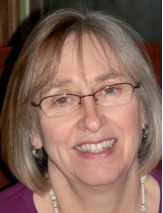Here is our new toy, a hand held scanner. We just slid it over the pictures and you can see the results. Not too bad.
We’re testing it out in preparation for use on our upcoming trip to France. It doesn’t produce quite the quality we get from the flatbed scanner at home (especially the background shade), but it should be great for blog or Facebook postings of some of the drawings that will be filling up the sketchbooks I just bought.
The New Hampshire images that follow were indeed scanned with this tiny device.
The dangerous bump is a tree root pushing up the paving.
And now to a softer palette. This drawing of the herb drying rack, and the other New Hampshire drawings below, were done this past Saturday on location at the Harvest Festival at the Enfield Shaker Museum in nearby Enfield, NH.
Shakers were a branch of the religious sect the Quakers. They began in England in the 18th century. And they flourished with twenty communities on the east coast of the U.S. in the 19th century. To quote the Enfield Shaker Museum website, “They practiced equality of the sexes and races, celibacy, pacifism, and communal ownership.” The celibacy clause eventually led to their demise.
The sun warmed me while I sketched the pink hollyhocks, various sunflowers, and spiky red plants that I can’t identify.
The Shakers were skilled gardeners and were the first folks, it is said, to sell seeds in little paper envelopes.
Next up, we stepped inside a wooden clapboarded building where the Museum’s curator was making barrels. The materials varied depending on the client’s wishes and the intended use of the barrel.
The ones above that look to be bound together in rope are in fact wrapped in split sapling strips. These worked fine for barrels containing contents of relatively low weight and exerting relatively low pressure. And were cheap.
Barrels used for beer (high pressure) and graphite for the pencil factories (heavy) required metal bands.
One activity station at this festival offered a chance to make pot pourri sachets. The dried flower petals and herbs were grown in the garden. I was ably guided by a Girl Scout who sure knew her pot pourri.
An old granite stone mill is in the background.
The Stone Mill building from 1849 sits atop a hill across the road from the main living quarters of the Shaker community. It houses three stories of water powered machinery. I have never been inside.
I, of course, like the red painted window trim.
The machine above is an apple chopper. The fruit is chopped before moving it to a press to make cider. Delicious samples were available for tasting. Other demonstrations at the festival included butter churning and the making of apple cider ice cream. The ice cream had been all consumed by the time we got there.
The Shakers believed in hard work, making money selling things out in ‘the world’, and inventing clever machines to speed along the hard work.
Enough of New Hampshire for now. Back to my collection of drawings of Downtown Los Angeles.
Above is the front door to the Ace Hotel, 929 Broadway, sited next to the United Artists Theater. There were a ton of biblical and ecclesiastical references. In the panels above the door, I saw, after a lot of squinting, St.George slaying the dragon. And another guy using his weapon to cut wheat. Or something like that.
The theater is designed to look like a Gothic church. I wonder what the inside looks like.
You may have guessed that I especially love small sidewalk signs, even if my lettering skills are not A+.
I believe it is obvious that these signs are meant for two distinct groups of people living in DTLA.
One more California image for this time. Here is a street view in the Arts District. You can see the tall buildings of the Financial District which is very helpful for orienting yourself. Meaning that I could always find my way back home to our daughter’s apartment.
I was up way too early in the morning for most denizens of the Arts District. (My body was still on East Coast Time.) Only a few sleepy dog owners shuffled past.
See all the murals, including the enormous face?
















No comments:
Post a Comment